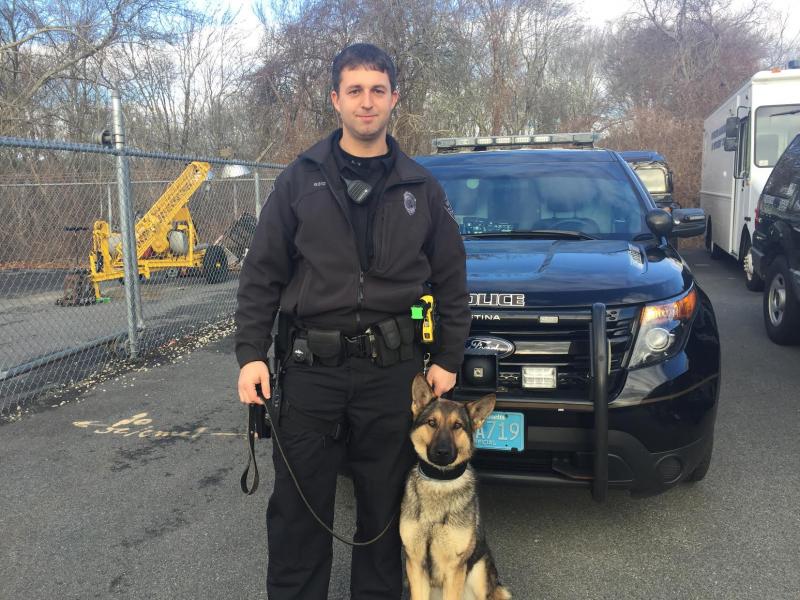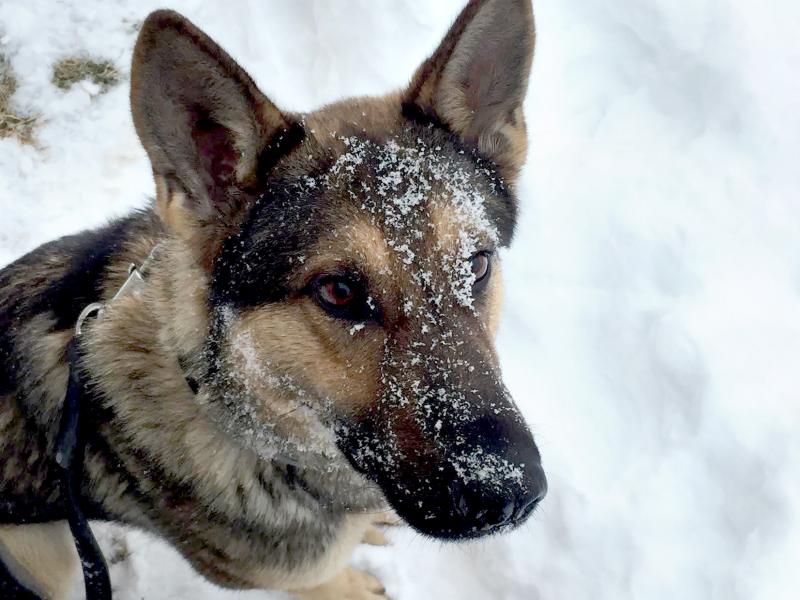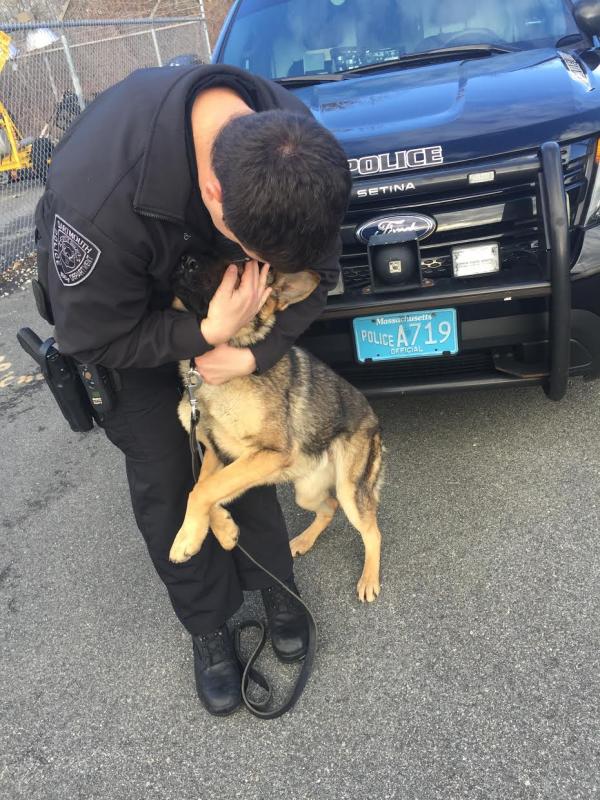Police add dog to K-9 unit for bomb detection
The newest member of the Dartmouth Police Department will sit in the back of a cruiser for most of his shifts, awaiting his partner. He can’t leave the vehicle by himself, but in an emergency, he can be released via remote control.
Sig — a 19-month-old, soon-to-be bomb-detecting German shepherd — is the third addition to the police department’s K-9 unit. He works alongside Officer Chris Flechsig, who’s been on the department for five years. Together, the two completed 14 weeks of basic patrol training through the police academy in Greater Boston to practice tasks such as tracking lost elderly patients, evidence recovery, and apprehension.
“He’s mainly a location tool,” said Flechsig. “He can locate car keys, which sometimes comes in handy.”
However, Sig’s training isn’t over yet. He’s currently in a 10-week Explosive Ordnance Disposal (EOD) training program, a.k.a. bomb detection, alongside Flechsig. Detecting bomb textures and locating bullet fragments will be his specialty.
Police Chief Bob Szala said he realized the K-9 was needed after the department called in to borrow the state police’s bomb detection dog — following a bomb threat last year that turned out to be a computer-generated call — and was placed on a waiting list.
“We thought the best way to attack it for the safety of our kids was to look into an EOD dog,” said Szala, who soon realized the community shared his concerns.
“We started receiving calls from businesses, donations to our gift account for the purchase of a K-9 with emphasis on explosives,” he said.
Donations paid for the $7,500 dog, which came straight from Germany, said Szala. Donations also paid for the 14-week patrol training, and the specialized cruiser outfitting.
“The Hot Dog System… It’s not just a kennel in the back of a cruiser,” said Szala. He explained that computerized fans kick on when the vehicle gets too hot, and Flechsig is equipped with a remote to release the dog in an emergency.
The only thing to come out of the department’s budget was the EOD training, but the price tag is well worth it, said Szala.
“It’s a resource specifically for Dartmouth, but also for the Commonwealth. It’s a need in today’s society,” he said. In the past, Dartmouth Police have also borrowed bomb detection dogs from the New Bedford Police.
As an asset to the South Coast, Sig’s training and health are of utmost importance. But Flechsig has it under control. The two do some sort of training exercise at least six days of the week, said Flechsig.
During the 14-week basic training, Sig would jump fences, crawl under low spaces, and maneuver through tunnels to build his agility. Flechsig, however, continues training with more basic approaches.
“There’s a training aspect to just ‘fetch.’ He fetches to find evidence,” Flechsig said.
Following the work day, Flechsig feeds the 70-pound German shepard 1.3 pounds of cooked chicken, turkey, or beef, and a side of pureed carrots or green beans. Sig also gets a multivitamin.
However, Sig doesn’t mingle with Flechsig’s wife, three kids, or two-year-old black Labrador.
“He’s a working dog. He needs to be focused on the job and the task,” said Flechsig. “[The kids] say ‘hi’ to him. He recognizes them. But it’s just good common practice to keep it separate.”
Sig and Flechsig will be ready to hit the road as a patrol unit, specially trained in bomb detection, by April 1. Flechsig said he’s confident working alongside his new partner.
“He’s a fearless dog. He never cowers away or backs from anything,” said Flechsig. The officer explained that the two were matched because their personalities were complimentary.
“I’m not a hyperactive type of person, so they gave me a dog that’s a little more active,” he said, explaining that Sig likes to jump. “What I lack, he gains because we’re partners.”
To honor his partner, Flechsig named the dog after his favorite gun. “Sig... it’s a German gun, a very reputable handgun,” he said.
The department’s other two K-9 specialize in search and rescue, and drug detection.
















